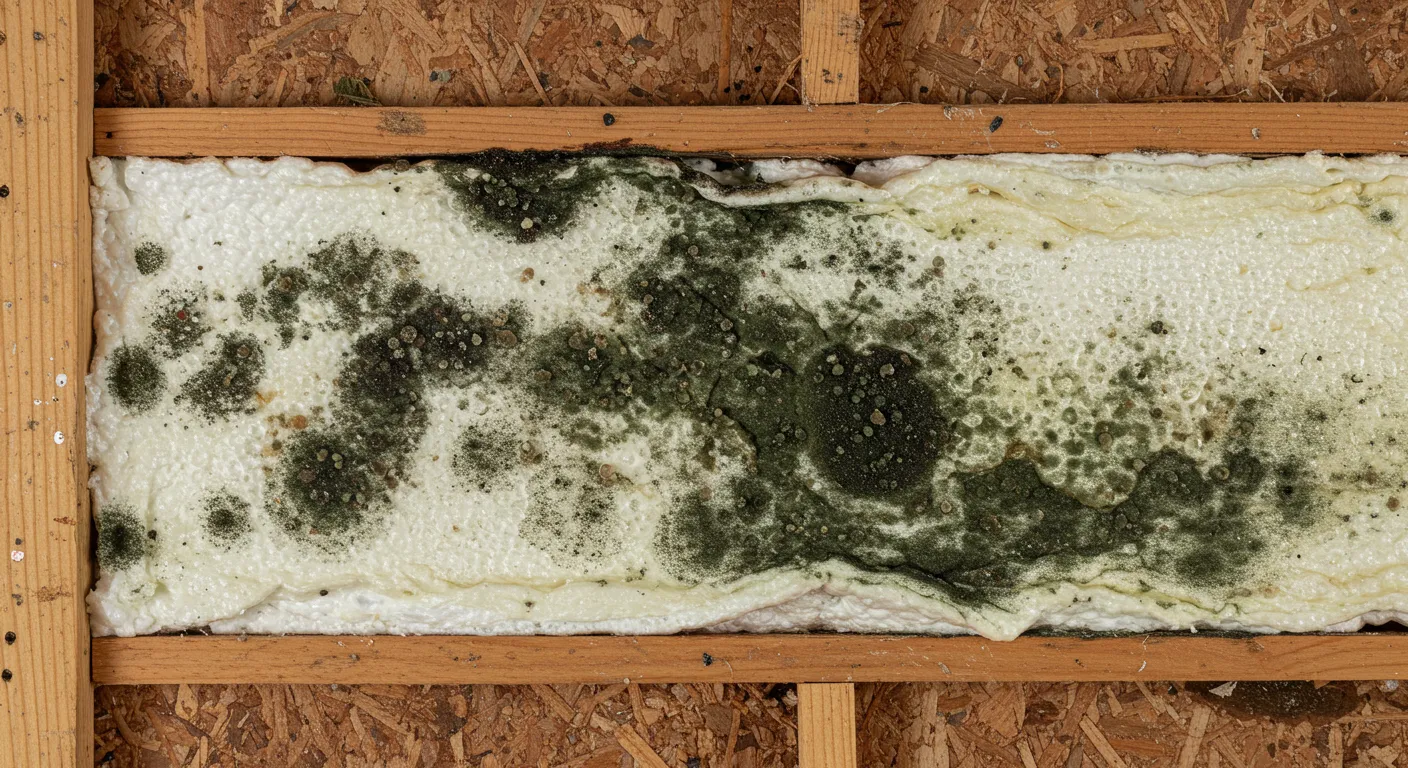Spray foam insulation is widely used for its superior sealing and energy efficiency. However, improper installation or environmental factors can lead to mold growth behind the insulation, causing structural issues and health risks. Preventing mold requires addressing moisture control, proper installation techniques, and ventilation strategies.
Why Mold Forms Behind Spray Foam Insulation
Moisture Accumulation
Moisture buildup behind insulation occurs due to condensation, water intrusion, or leaks. If excess humidity is present and unable to escape, it creates an environment where mold can thrive.
Improper Installation
If spray foam is not applied correctly, gaps or inconsistencies can allow warm, moist air to infiltrate. When this air meets a cold surface, condensation forms, increasing the risk of mold.
Lack of Proper Ventilation
Inadequate ventilation in walls, attics, or crawl spaces can trap moisture inside, leading to long-term mold issues. A well-ventilated space helps regulate humidity and prevents condensation buildup.
Steps to Prevent Mold Behind Spray Foam Insulation
1. Control Humidity Levels
Keeping indoor humidity levels below 60% reduces the risk of mold growth. Consider these methods:
- Use dehumidifiers in high-moisture areas such as basements and crawl spaces.
- Install vapor barriers where necessary to prevent moisture infiltration.
- Ensure HVAC systems are functioning correctly to maintain optimal indoor humidity.
2. Ensure Proper Installation
A professional installation of spray foam insulation minimizes the risk of gaps and inconsistencies. Key installation practices include:
- Applying spray foam in continuous layers to create a sealed barrier.
- Using closed-cell spray foam in high-moisture areas, as it provides better moisture resistance.
- Conducting thermal imaging or blower door tests to identify and seal potential air leaks.
3. Address Ventilation Needs
Proper airflow prevents moisture buildup by allowing trapped air to escape. Important ventilation strategies include:
- Installing soffit and ridge vents in attics to regulate air circulation.
- Ensuring crawl spaces have adequate ventilation or are completely encapsulated with a vapor barrier.
- Using mechanical ventilation systems, such as HRVs (Heat Recovery Ventilators) or ERVs (Energy Recovery Ventilators), to improve air exchange in tightly sealed homes.
4. Inspect for Leaks and Water Intrusion
Leaks from roofs, windows, or plumbing can introduce moisture behind insulation. Regular inspections help identify and address these issues early. Steps include:
- Checking for roof leaks, especially around chimneys and flashing.
- Sealing gaps around windows and doors to prevent water infiltration.
- Ensuring gutters and downspouts direct water away from the foundation.
5. Choose the Right Type of Spray Foam
Spray foam comes in two primary types, each with distinct benefits for moisture control:
- Closed-cell spray foam: Acts as a vapor barrier, preventing moisture penetration and offering structural support.
- Open-cell spray foam: Allows some moisture transfer but provides excellent air sealing. Suitable for areas where controlled moisture permeability is beneficial.
Addressing Mold If It Forms Behind Spray Foam
If mold has already developed behind spray foam insulation, the following steps should be taken:
- Identify and remove the source of moisture: Fix any leaks or humidity problems before addressing the mold.
- Remove affected insulation: Spray foam may need to be cut out and replaced if mold is present.
- Clean the area thoroughly: Use an antimicrobial cleaner to treat the affected surfaces before reinstalling insulation.
- Improve moisture control: Implement humidity regulation and proper ventilation to prevent recurrence.
Professional Assistance for Mold Prevention
Applying spray foam insulation correctly and maintaining a dry environment requires expertise. At Foam Worx Insulation, our team ensures proper installation and moisture management to prevent mold-related issues. Contact us at (507) 407-6688 or visit foamworxinsulation.com for expert guidance.
FAQs
Can spray foam insulation trap moisture?
If installed incorrectly, spray foam can trap moisture against surfaces, leading to mold. Proper installation and moisture control strategies prevent this issue.
Is closed-cell spray foam better for preventing mold?
Yes, closed-cell spray foam resists moisture infiltration and acts as a vapor barrier, reducing the chances of mold growth.
How can I tell if mold is forming behind my insulation?
Signs of mold include musty odors, visible stains on walls, increased humidity, or unexplained respiratory issues. Infrared imaging can help detect hidden moisture.
Should I remove spray foam if mold is found?
In most cases, affected insulation must be removed and replaced after treating the mold. Addressing the moisture source is essential to prevent recurrence.
Does spray foam insulation need ventilation?
While spray foam seals air leaks, proper ventilation in attics and crawl spaces is necessary to regulate moisture levels and prevent condensation.
Can I install spray foam insulation myself?
DIY spray foam installation carries risks, including improper application and moisture trapping. Professional installation ensures effective sealing and long-term performance.
What areas are most prone to mold behind spray foam?
Basements, crawl spaces, attics, and exterior walls exposed to frequent temperature fluctuations are more susceptible to moisture buildup and mold formation.
How often should I inspect for mold behind insulation?
Annual inspections of insulation, walls, and ventilation systems help identify early signs of mold and moisture problems.
For expert insulation solutions, reach out to Foam Worx Insulation at (507) 407-6688 or visit foamworxinsulation.com.




